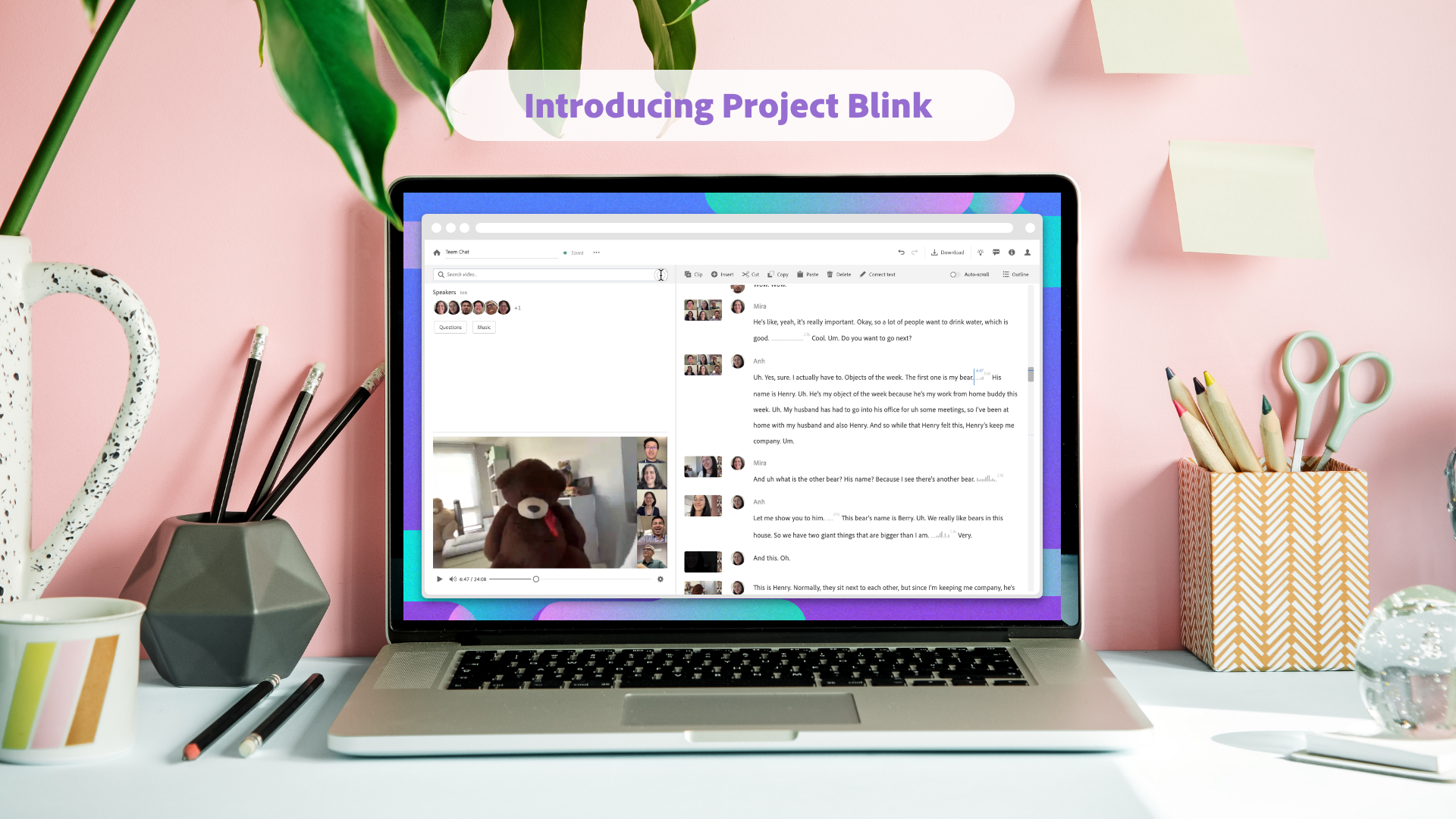
Research Engineer Ailie Fraser, a three-time Adobe Research intern turned full-time employee, brings a background in computer science, math, and music to her work on human-computer interaction.
We talked to Fraser about how her interests come together in her work, what it’s like to collaborate on cross-functional teams and build new creative tools, and the best parts of being a research engineer.
How did you get interested in human-computer interaction (HCI)? What do you hope to do in the field?
I’ve always been interested in the intersection between creativity and technology. Growing up, I had a lot of creative hobbies like music and photography, but I also used computers from a young age. So I’d do things like play around in Photoshop or make songs in GarageBand.
I think my interest in how people interact with digital tools came out of this love of making music, movies, and photos. Professionally, I’m excited about building tools that amplify people’s creativity and act as a partner in the creative process.
Can you tell us about how your musical background helped shape your approach to research?
I grew up playing piano from the time I was five, and then I played violin and clarinet, and I learned guitar as a camp counselor — it’s such a key element of a good campfire! I also went to an art-focused high school where I got interested in music theory and composition. Then, as an undergraduate, I studied music, math, and computer science. It was a great combination because music is so mathematical, and technology is such a key part of creative projects like music composition.
I think my experience learning music prepared me for research, too. With music, there’s raw practice, repetition, and iteration — and that is very much what research is like.
What are some of the big projects you’ve been working on with Adobe Research lately?

For almost three years, I worked on Project Blink. It’s an AI-powered video editor that we released as a beta web application. It’s been exciting because I’ve been able to see the positive reaction our customers have to our work. Now we’re thinking about what’s next. For example, we’re seeing a lot of interest from people all over the world who want to use our technology in other languages — and this raises a lot of interesting interaction questions. For instance, when a language moves right-to-left, instead of left-to-right, or uses different characters, we need to think about how text selection for video editing should work.
What was it like collaborating with a big cross-functional team for this project?
It’s been really cool, especially coming out of a PhD program where projects and groups tend to be smaller-scale. There are so many people working on different pieces of the code, so it’s always moving forward and it’s always improving. We’ve accomplished something greater than any one of us could have built on our own.
You also worked on Behance when you were an intern with Adobe Research. What was that experience like?
I worked with a team of researchers on a platform in Behance that lets people livestream as they work in Photoshop, Illustrator, or Fresco. Behance includes a huge library of multi-hour livestream recordings, so there’s a ton of knowledge there — people share tips and tricks and answer questions.
Our goal was to help people interact with the recordings more easily, so you don’t have to go through a three-hour video to find what you’d like to learn. To do this, we developed an algorithm that uses data, like video transcripts and records of which tools people used, to create chapters that let you navigate within recordings. It was a really fun project, and it was my first tech transfer experience, which was really exciting as an intern.
What’s one of your favorite things about being a research engineer at Adobe Research?
Pair programming is really fun, and I think it’s where I’ve learned the most. My colleagues and I will share a code editor during video meetings so we can type into the same editor at the same time. It gives us a chance to teach each other things and contribute to each other’s work. It a great way to interact with other engineers on my team and get work done at the same time.
How did you decide to join Adobe Research after you finished your PhD?
After three internships with Adobe, joining full-time felt like a no-brainer. I already knew that I liked the people, the work, and the culture.
One of the big things that appealed to me about Adobe Research is that there’s academic research, but a lot of our research explorations make it into products, too. I think this is because Adobe hires people who are passionate about the tools we build. Everyone I work with is creative in some way, so we’re researching and designing tools for people like us.
Wondering what else is happening inside Adobe Research? Check out our latest news here.